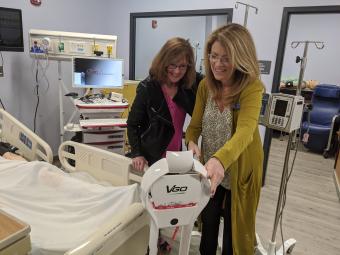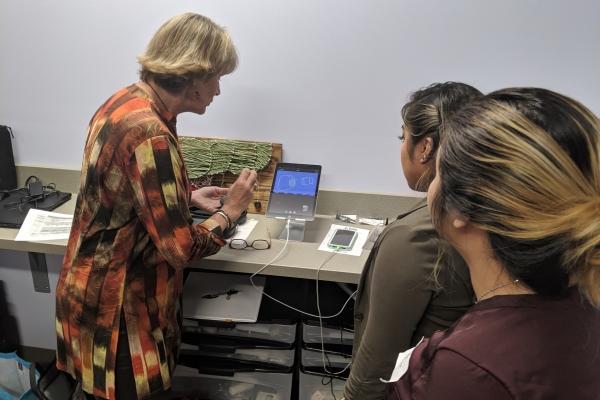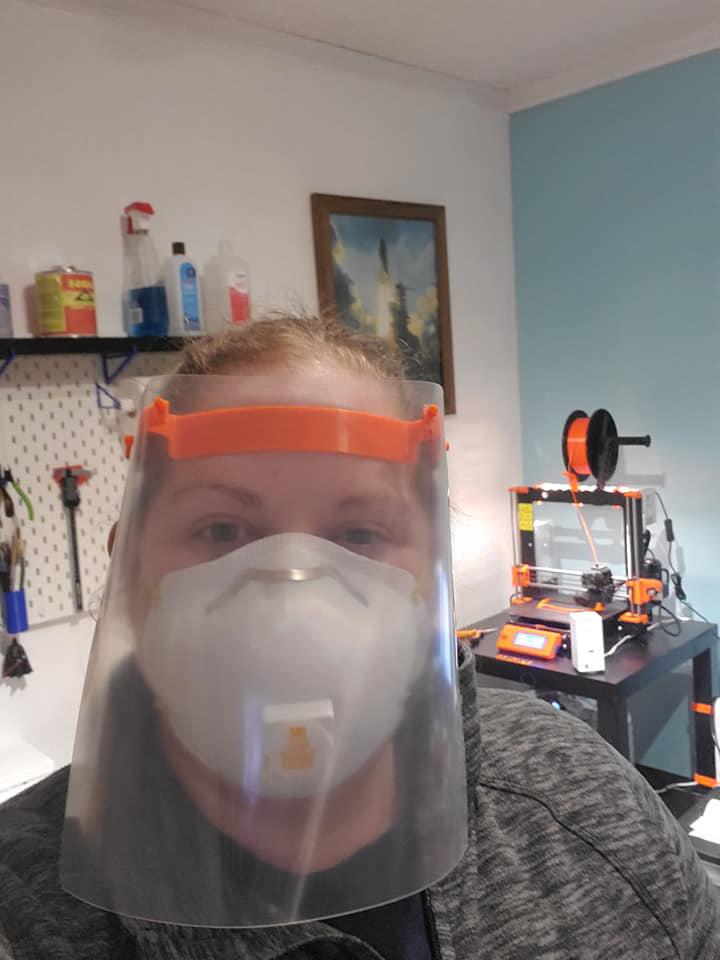Michele Bordelon is the Center for Telehealth Innovation, Education & Research telehealth manager and Tina Gustin is one of the center's co-directors.
Co-director Carolyn Rutledge says the long-term goal of the center is to expand its research, educational programs and innovations.
Old Dominion University has established C-TIER - the Center for Telehealth, Innovation, Education and Research, including a series of Telehealth training videos, funded by a HRSA Advanced Education Workforce Grant.
By Irvin B. Harrell
Our nation is facing an unprecedented public health crisis as a result of COVID-19. Healthcare providers and systems are striving to implement methods to address the health and wellbeing of our nation while preventing the spread of the virus. Telehealth has emerged as a primary modality for addressing our nation's healthcare needs. Telehealth enables providers and patients to remain separate from each other while participating in healthcare delivered virtually. It includes videoconferencing health visits, remote patient monitoring with devices to collect physical data, and behavioral health counseling. In addition, it allows providers to consult with other providers/experts at a distance.
At the 2019 State of the College address, President John R. Broderick officially announced Old Dominion University's Center for Telehealth Innovation, Education & Research (C-TIER). Carolyn Rutledge and Tina Gustin - both faculty members for ODU's School of Nursing - are co-directors for the center. For Rutledge and Gustin, the center couldn't be available at a better time.
An immediate goal of C-TIER has been to provide guidance to those who are rapidly establishing telehealth programs. Providers must understand steps for successful, safe delivery of telehealth while maintaining as much security and protection of patients and their information as possible, Rutledge says. "We have developed training videos (right) that are being used nationally by providers, hospitals, and educational programs to assist in the implementation of telehealth."
This week we are producing additional videos that focus on conducting physical exams through videoconferencing when touch is not an option.
"We are consulting nationally as a result of COVID-19 to help develop and implement telehealth delivery programs, provide clinical education opportunities for students, and develop educational programs for students and providers," Rutledge said.
Telehealth is a good way to deliver health care in a time of crisis. For years, it has been used to provide care to patients in underserved regions. Gustin states, "This is an exciting time for Telehealth in that providers who have been reluctant to "try" Telehealth are now using it to assure that their patients receive necessary care. Hospitals that had only 20 Telehealth providers now have 400 providers delivering Telehealth services. This type of service line has occurred in less than one week. Changes in healthcare delivery have never experienced this type of growth."
According to Rutledge, "At least 33 percent of our students in the Doctor of Nursing Practice (DNP) programs conduct research studies on telehealth and many have developed telehealth delivery programs in cardiac, dermatology, primary care, stroke education, diabetes, etc."
But now, she says, with the need for isolation during this pandemic, telehealth is being used to:
Provide care to patients quarantined at home including the elderly and immunocompromised,
Address acute and chronic patient issues without having patients come to clinical sites,
Diagnose and care for those with COVID-19 symptoms without exposing others,
Address patients with behavioral health needs as well as those with stress/anxiety that is mounting with the crisis, and
Provide care in our hospitals while protecting our providers.
Rutledge and Gustin have been keeping providers at both the national and state level aware of the rapidly changing federal and state guidelines regarding telehealth. This includes the emergency waivers executed by Trump at the federal level and Governor Northam at the State level. Previous restrictions placed on telehealth have been removed with the goal of improving access to care through telehealth. Rutledge and Gustin sit on State and National telehealth boards that have lobbied for these changes.
Michele Bordelon, C-TIER's telehealth manager, coordinates and oversees C-TIER's training, telehealth equipment, and marketing.
C-TIER has telehealth devices that include a robot, automated medication dispensers, electronic stethoscopes and EKG via the iPhone.
"We have a 'travel kit' or 'disaster kit' used to demonstrate how care can be provided in remote situations (rural populations, free clinics, and disaster sites)," Bordelon said. "We also use a multi-purpose camera device that can be connected to the telepresence unit so that a real-time visit with a specialist at a distance can be used to see the images coming from the camera device."
Bordelon is a huge proponent of this cutting-edge technology and is excited about the future of C-TIER.
"Telehealth is a vital conduit for people to connect efficiently, effectively and timely to healthcare, bringing it to where they live and work," she said. "The more we have simple/efficient ways to manage our health and stay healthy where we live, the better our lives are and the stronger, more efficient our healthcare system is."
C-TIER took several years to develop and a series of grants, Rutledge says.
"We started developing a telehealth curriculum in 2012 and received funding by the Health Resources and Services Administration (HRSA) to move advanced practice curriculum to interprofessional education," she said. "We were one of the first schools in the country to teach an interprofessional team of healthcare professionals to collaborate using telehealth."
ODU received at least four more grants, Rutledge said, that enabled ODU to develop interprofessional telehealth training with10 professions: nurse practitioners and clinical nurse specialists, physical therapy, athletic training, dental hygiene, speech and language pathology, and clinical counseling at ODU; pharmacy at Hampton University; fourth-year medical students at Eastern Virginia Medical School (EVMS); and social work students at Virginia Wesleyan University.
"We have educated more than 2,100 students and of these more than 1,000 medical students," she said.
Rutledge spearheaded the position paper on educating nurse practitioner students in telehealth for the National Organization of Nurse Practitioner Faculty (NONPF). It was the first position paper written for education on telehealth for healthcare professionals. She will be giving a nationwide webinar titled, "Dealing with COVID-19 by Implementing a Telehealth Program" on Tuesday, March 31.
Gustin states, "I believe that following this crisis, care will never be delivered in the same way again. Schools will be expected to teach healthcare students how to deliver this type of care. Providers will have telehealth as an option for future healthcare delivery." As C-TIER continues preparing more faculty, students, and healthcare professionals to use telehealth, Rutledge says, it plans to expand its research, educational programs, and innovations.
"We want to develop a funding mechanism to make C-TIER self-sustaining without dependency on grant funding," she said. "I would like to see it state-supported."








